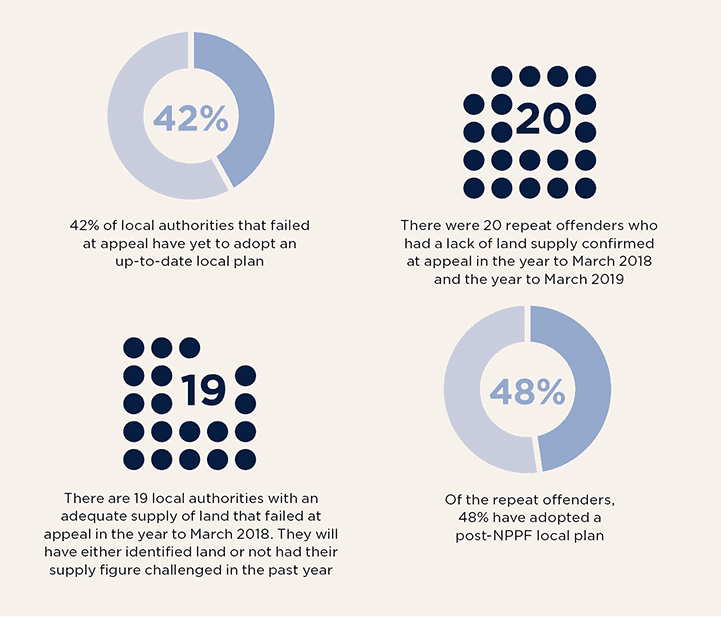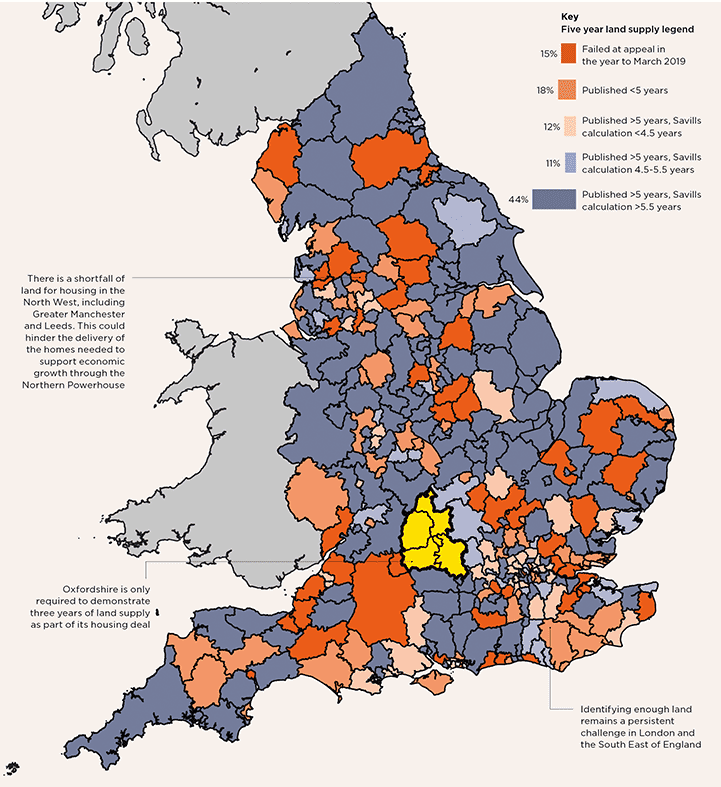The Housing Delivery Test has altered the methodology for calculating five-year land supply, but local authorities are still falling short
Identifying enough land for housing development remains a challenge for many local authorities. Some 15% had a lack of five-year land supply confirmed at appeal in the year to March 2019. However, this is a decrease on the 19% of local authorities with significant appeals disproving their land supply in the previous year. Of those who failed at appeal, 60% claimed to have more than five years’ supply.
In addition, fewer local authorities (18%) published less than five years’ supply compared with the 21% doing so last year. Across England, there is published land supply of 6.4 years, up from 6.1 years in April 2018. This is the third consecutive year of an increase in published land supply.
Falling short on delivery
The Housing Delivery Test, introduced in 2018, is used to measure delivery against need for all local authorities across England. Under the test, local authorities failing to meet at least 85% of need are required to apply a 20% buffer to their annual housing target. For 30 local authorities across the country, this will mean an increase from the 5% buffer in their most recently published land supply statements. With the buffer applied, we have calculated that the land supply for five local authorities that claim they have an adequate supply would fall below five years.
The situation is further complicated by the changes introduced in Paragraph 217 of the revised NPPF, which enables local authorities who enter into a housing deal with government to reduce their land supply target to three years. In Oxfordshire, such an agreement came into force on 12 September 2018, and is intended to enable the local authorities to focus their efforts on their Joint Spatial Strategy.
We have calculated that each of the five districts in Oxfordshire has more than five years’ worth of land, thereby meeting the agreed requirement. However, in the year to March 2019, South Oxfordshire and West Oxfordshire both had significant appeal decisions allowed against them on the grounds of housing land supply issues.

Missing the mark How local authorities are falling short on land supply
Source: Savills Research | Note: All five-year land supply data is up to date to 1 April 2019
Methodology
We have applied a simple five-year land supply calculation to all local authorities in England using the LPA published supply figures. No adjustment has been made to the supply, and the methodology does not impose any different treatment of the basic requirement other than it being annualised (spread equally over the next five years). The map indicates categories based on the result, which allows a like-for-like comparison between authorities and echoes the arguments being used in appeals based on five-year land supply across the country.
Our calculation works as follows:
1) Current five-year requirement (taking the first available data source from the following list):
a) Post-NPPF local plan target (where local plan is less than five years old).
b) Local housing need figure calculated using latest published affordability data.
2) Apply buffer according to Housing Delivery Test results to requirement.
3) Calculate the five year supply based on these figures (based on LPA quoted land availability – from SHLAA and/or AMR).
We are not questioning deliverability of the stated land supply in this exercise.

Five-year land supply Identifying enough land to achieve the required level of delivery remains a challenge
Source: Savills Research
Read the other articles within this publication below
.jpg)
.jpg)
